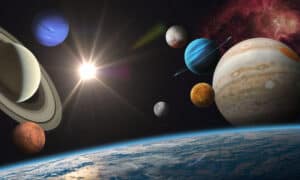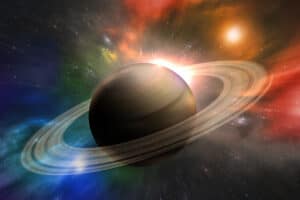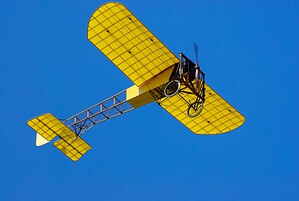Water, energy, and nutrients: in the most basic sense, these are the three main components necessary for a planet to support life. Known for its massive, dazzling system of rings, Saturn is our solar system’s least dense planet despite also being our second-largest (just behind Jupiter in size). This is because over 95% of it consists of hydrogen, the lightest known element. But what about water? Is there water–or any liquid, for that matter–on Saturn, and if so, what is it made of? Read on as we answer this question and go on an in-depth exploration into Saturn’s atmosphere and composition below.
What Is Saturn and Its Atmosphere Made Of?
Saturn is a type of planet known as a gas giant. This means rather than having a mostly solid surface and composition like terrestrial planets do, it’s essentially a massive ball of swirling gasses. Like we touched on in the intro above, Saturn is almost entirely composed of hydrogen, the lightest element. This makes it the lightest and least dense planet in our solar system. It’s so light, in fact, that it could actually float on water. This, of course, assumes there were an ocean large enough in which to place it.
Interestingly, though, scientists believe it has a rocky core made up of metals like iron and nickel underneath all that hydrogen gas. However, we haven’t actually probed it yet to confirm. That core is likely surrounded by a layer of hydrogen in a metallic state. Finally, another layer of liquid hydrogen and helium lies on top. The other four percent of Saturn’s composition is mainly helium, as well as traces of ammonia and methane.
Meanwhile, Saturn’s seven orbiting rings are mostly made up of tiny, solid ice–yes, frozen water–and carbon particles. There are also some smaller bits of rock and dust floating around within them. These chunks of rock vary vastly in size from just a few micrometers to several meters in diameter.
In addition to having seven rings, Saturn is also orbited by a whopping 145 moons! Titan, its largest moon by far and also the second-largest moon in our solar system, makes up around 96% of the total mass orbiting the planet. It is slightly larger than the planet Mercury despite being much lighter. Like most of Saturn’s moons, its main components are ice and rock. Meanwhile, much of its atmosphere consists of nitrogen gas.
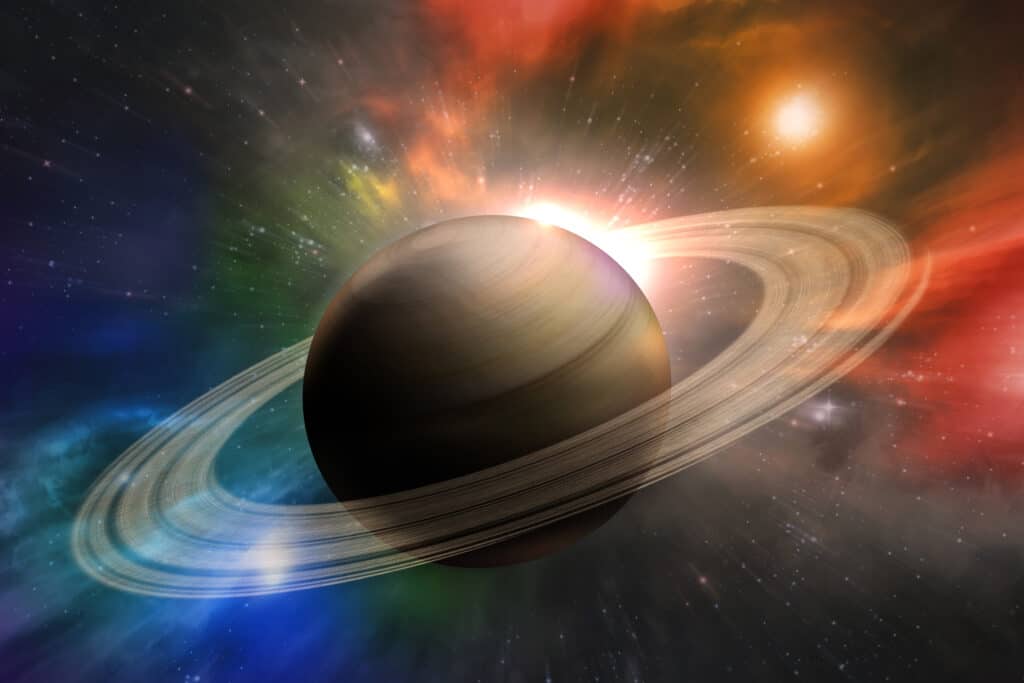
Saturn and its atmosphere mainly consist of hydrogen gas.
©iStock.com/EzumeImages
Is There Liquid Water on Saturn?
Because the vast majority of Saturn’s composition is hydrogen and helium and it lacks an actual surface, it doesn’t have any lakes, oceans, or pools of water like we have here on Earth. But many trace elements are also floating around in Saturn’s massive, mostly gaseous ball, most notably tiny amounts of gaseous water. So, while water vapor does technically exist on (or, more accurately, swirling around inside of) Saturn, it’s far from being abundant enough or in the proper state for swimming in or drinking.
But, as we touched on earlier, things get rather interesting when we look at this gas giant’s moons and rings. Saturn’s rings contain lots of solid pieces of ice and rock that can be as small as a speck of dust or larger than a house! These billions of pieces of space debris were likely once parts of larger asteroids, comets, or even moons.
Scientists believe these larger celestial bodies probably broke apart before they reached Saturn’s atmosphere. Alternatively, some likely broke apart upon encountering the planet’s gravitational force. Still, though, these tiny bits of ice are not in a liquid state. This is because Saturn’s atmosphere is extremely cold at around -280F on average.
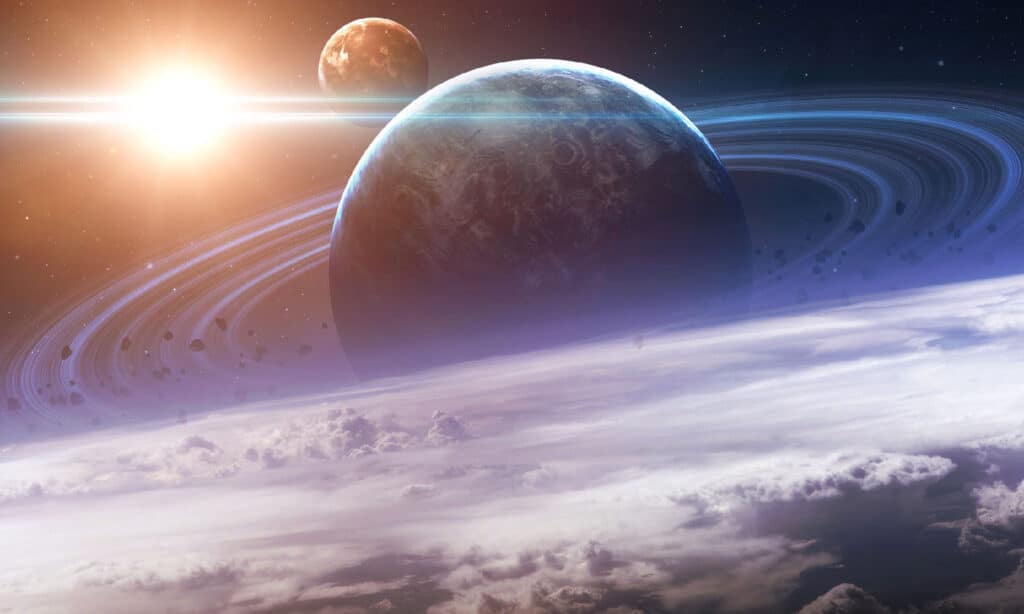
Although Saturn does have water vapor, it lacks liquid water.
©iStock.com/forplayday
Could Saturn Support Life?
Unfortunately, Saturn won’t be ideal for humans (or virtually anything living) to colonize any time soon. In addition to being gaseous in composition and unbearably cold, the miniscule amounts of water present are mainly in the form of ice crystals. Its atmosphere also exerts a massive amount of pressure that increases the closer you get to its metallic core.
On top of lacking drinkable water and a walkable surface, Saturn’s weather is intolerable for humans and essentially all known forms of life here on Earth. For starters, the planet’s wind speeds can exceed 1,000 miles per hour. These winds create frequent hurricanes and typhoons of swirling gasses that can last for decades! This is due to its incredibly slow orbit around the sun. It can take around 30 Earth years for it to complete a single revolution.
Perhaps even more discouragingly, even breathing on Saturn would be unbearable because of the planet’s atmosphere and weather patterns. Critically, its atmosphere lacks oxygen. Even if this critical component for human life were present, the constant high-speed winds, frigid temperatures, and crushing pressure would make breathing impossible.
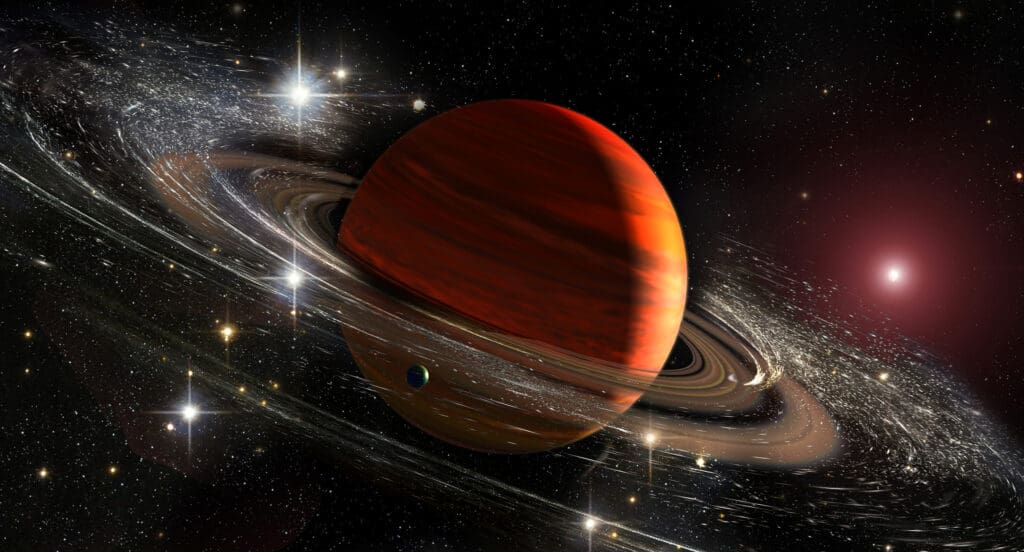
Saturn’s atmospheric pressure, weather, and lack of oxygen make it unable to sustain life.
©iStock.com/Elen11
Could Saturn’s Rings or Moons Support Life?
Sadly, the case detailed above is about the same for Saturn’s rings. Similarly, these rings lack solid surfaces, since they consist of lots of smaller pieces of rock and debris. Furthermore, while a few of Saturn’s terrestrial moons like Titan are slightly more habitable, they’re still far from tolerable for humans or other animal life.
Despite being one of the most Earth-like moons in our solar system, Titan is also incredibly cold at around -290F. Its vast, icy surface does have lakes, but they lack water and are full of methane and ethane. Even if you were able to melt Titan’s mostly-icy surface and reach the ocean of water underneath, it wouldn’t be safe to drink. It has high amounts of salt, sulfur, and ammonia.
In short, neither Saturn nor its many rings or moons are livable for us humans, nor is their water drinkable. Some scientists speculate that Titan’s lakes of ethane and methane could potentially support certain types of microbes. However, this “life” would be very different from what we know on Earth.
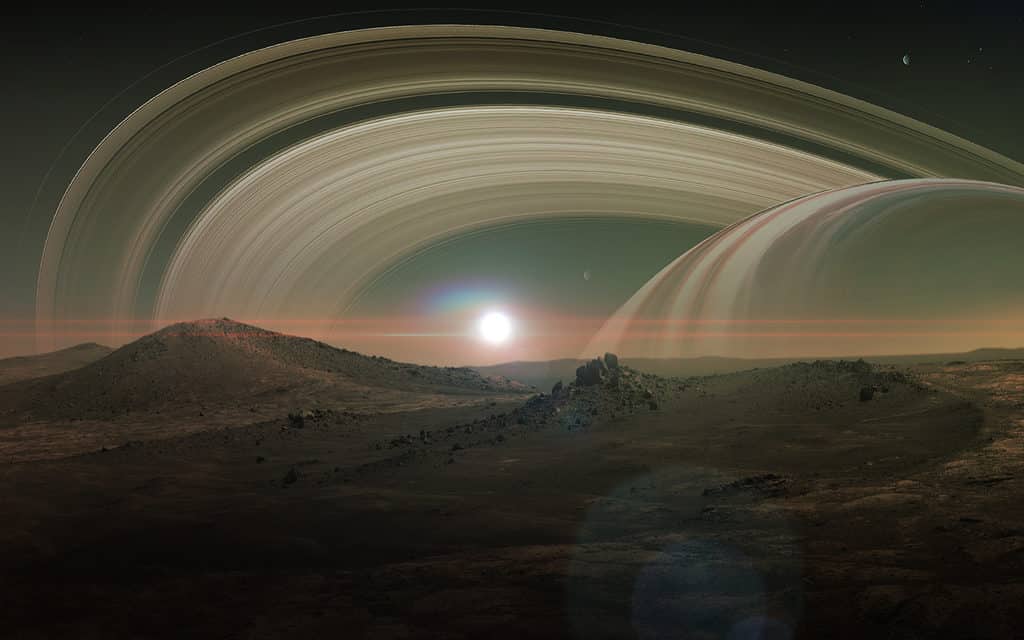
Titan, Saturn’s largest moon, could theoretically sustain microbes, but not human life.
©Vadim Sadovski/Shutterstock.com
The photo featured at the top of this post is © iStock.com/Elen11
Thank you for reading! Have some feedback for us? Contact the AZ Animals editorial team.



